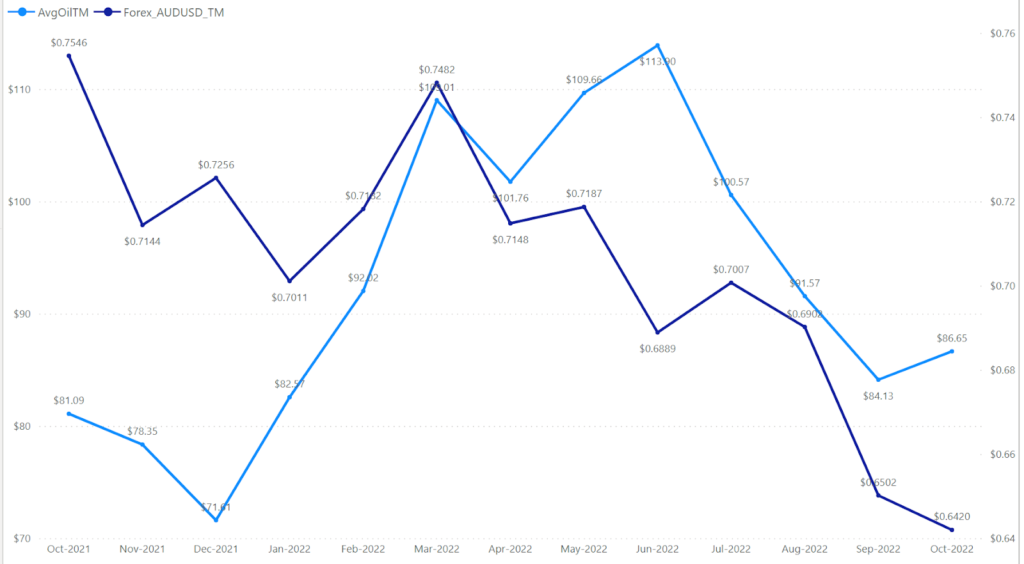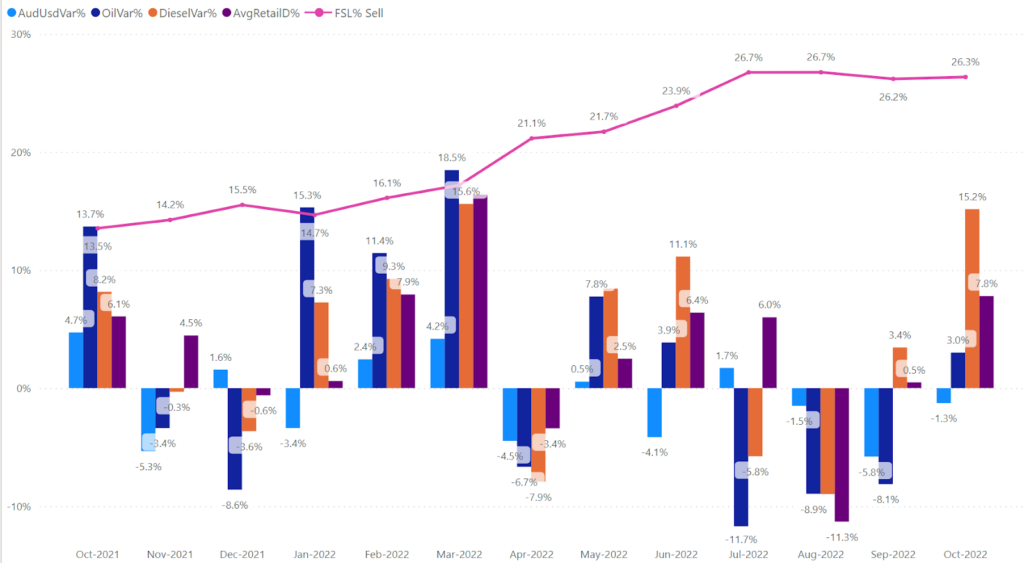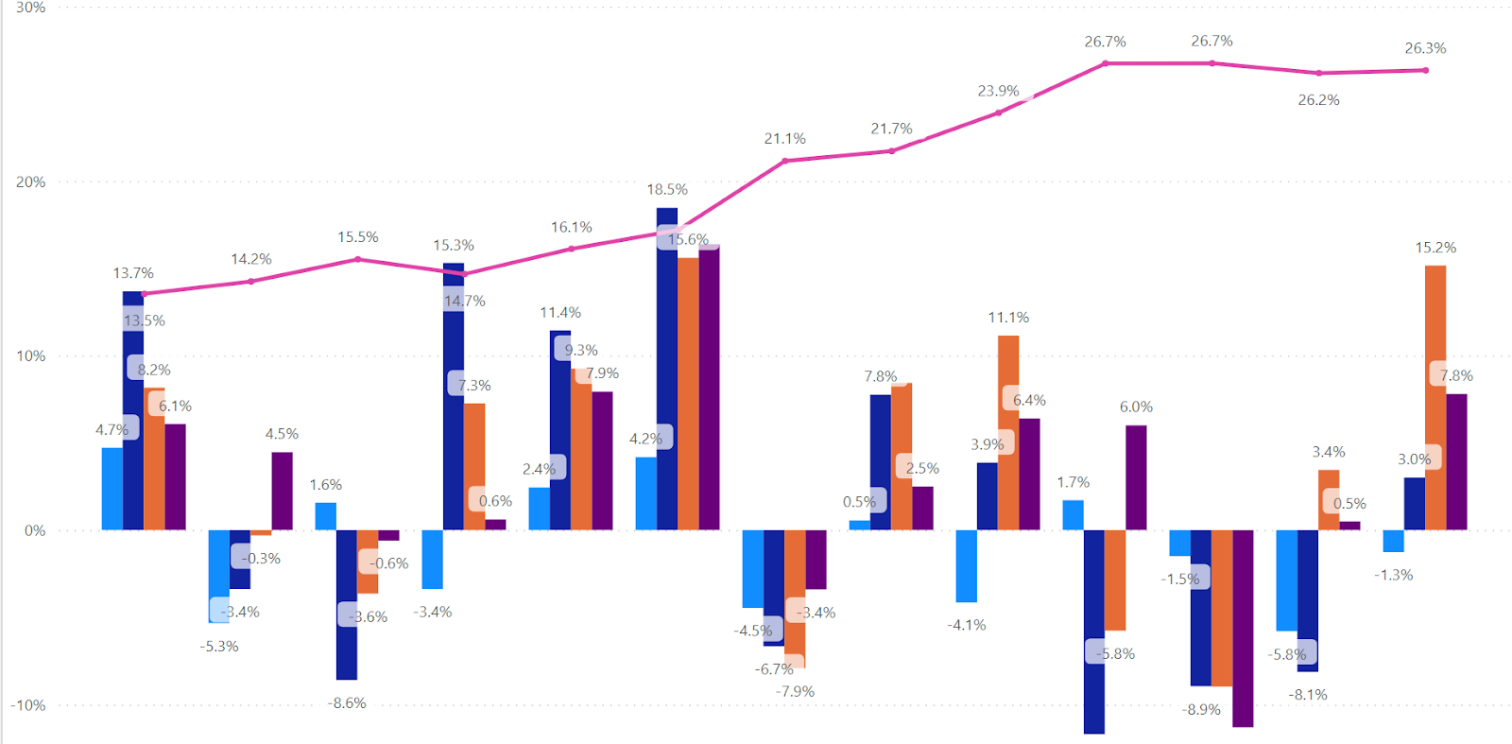Transport companies are still charging lofty figures and this is the result of the relationship between AUD and the nation’s commodities.
AUD and the price of raw materials such as oil are highly correlated. This can be seen in the attached graphs below.
Whilst the oil barrel price has declined from its peak above $113 to $76 per barrel, AUD has also fallen from $0.75 to $0.64 over the previous 12 months (*line graph). Concurrently, average fuel surcharges of almost 27% are due to the war in Ukraine and bans on Russian oil purchases. This time last year it was circa 15% (*bar & line graph).
With sustained higher fuel surcharges, businesses either have to absorb or pass this cost on to their customers. The key for any business is to be agile and share visibility with each of their providers. This will ensure any changes in commodity pricing at oil and currency levels are ultimately being reflected in its bill from the underlying transport provider.
Being able to measure and correlate each transport provider with a commodities overlay is key in ensuring you are charged at the true variable levels. Each carrier has its own methodology but ultimately is subject to the rises and falls of commodities which should be passed on to the buyer of their service.
Do you know what FSL you should pay as it moves with changes in commodity pricing? Here are some key reference links for your use:
AUD/USD ($): http://www.rba.gov.au/statistics/historical-data.html#exchange-rates
Cost of Diesel (TGP/$): https://aip.com.au/pricing/terminal-gate-prices
Cost Per Barrel (USD/$) Crude Oil: http://www.exchangerates.org.uk/commodities/OIL-USD-history.html
Diesel Retail Price($): https://aip.com.au/pricing/national-retail-diesel-prices
Need help navigating the maths?
The team at AFS are here to help and ensure you are being charged the right amounts.




